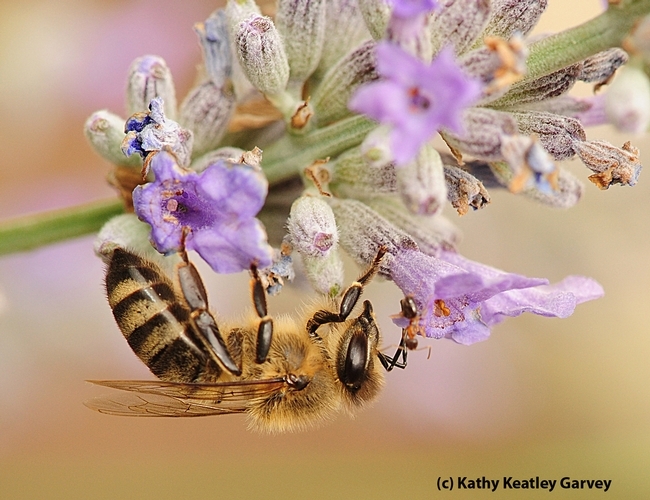- Author: Kathy Keatley Garvey

In less than 48 hours, nearly 500,000 people have seen them—but not in his restricted-access lab.
His research subjects are blood-sucking tsetse flies, and PBS featured them in its Deep Look video, “A Tsetse Fly Births One Enormous Milk-Fed Baby,” released Jan. 28, and its accompanying news story.
Infected tsetse flies transmit the parasite that causes human and animal trypanosomiasis, better known as sleeping sickness. “The parasite invades the central nervous system and disrupts the sleep cycle,” says Attardo, a global authority on tsetse flies and an assistant professor in the UC Davis Department of Entomology and Nematology. “If not treated, the disease can result in progressive mental deterioration, coma, systemic organ failure and death.”
“PBS sent out a film crew and we spent about two days filming,” he said. The video also includes footage from Africa that PBS purchased, and video of a tsetse trap that Attardo filmed in the Nguruman Escarpment, Kenya, on the border of Tanzania.
Attardo researches one of 35 tsetse fly species, Glossina morsitans morsitans, which prefers feeding on cattle to humans. Its strong mouthparts can easily puncture the tough cattle hide. In his lab, he feeds them warm cow blood.
Tsetse flies, which resemble house flies, are distinguished from other Diptera by unique adaptations, including lactation and the birthing of live young, Attardo says. Just like mammals, tsetse flies, deliver babies and feed them milk. A female produces more than her body weight in milk.
“We mammals like to think we're pretty special, right?” the video begins. “We don't lay eggs. We feed our babies milk. Well, this very pregnant fly is about to prove us wrong. Yep, this tsetse fly is in labor. And that emerging bundle of joy is her larva. While other insects can lay hundreds of eggs, she grows one baby at a time inside her, just like us. Congratulations!”
The accompanying news story, by Gabriela Quirós, explains that Attardo is “trying to understand in detail the unusual way in which these flies reproduce in order to find new ways to combat the disease, which has a crippling effect on a huge swath of Africa.”
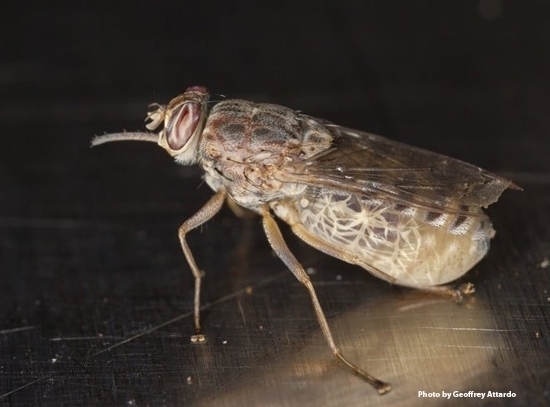
The video shows tsetse flies feeding on cattle, at which point the script reader explains that
“Geoff Attardo…hopes to help. He's trying to stop tsetse flies from making babies in the first place. A female only mates once in her life, enough to make the 10 or so babies she'll have. The male makes sure she doesn't mate again by delivering a substance that makes her lose interest in sex. Scientists are trying to figure out what it is. If they could bottle it and spray it, female tsetse flies may never get busy at all. No more tsetse offspring to worry about.”
Attardo says that tsetse flies deliver only one offspring at a time, as compared to insects that lay hundreds or thousands of eggs at one time. Spraying insects and setting traps can reduce the number who develop the disease, but the insects may become resistant to the chemicals.
Once a female mates, storing the sperm she'll birth in a lifetime, the male delivers “a substance that makes her lose interest in sex,” Quirós wrote. It is that substance or what Attarado calls a “reproductive dead end,” that Attardo wants to replicate, to bottle and spray on the tsetse flies..
“The females definitely are making the decisions,” Attardo told Quirós. “She'll sort of tuck her abdomen underneath her body to prevent him from gaining access, and buzz her wings and knock him off.”
The news story also touched on a bacterium, Wigglesworthia glossinidia, found inside the females that apparently has a role in milk production. “When they kill the bacteria with antibiotics, female flies are no longer able to grow a larva, “Queros wrote. “Young larvae stop growing inside their mothers and are aborted. The results of an experiment by Attardo, which he hasn't published yet, suggest that this happens because flies without the bacteria have trouble making milk.”
Last fall, Attardo published landmark research that provides new insight into the genomics of the blood-sucking tsetse fly. The paper, published Sept. 2 in the journal Genome Biology, compares and analyzes the genomes of six species of tsetse flies and the research could lead to better insights into disease prevention and control.
“It was a behemoth project, spanning six to seven years,” said Attardo. “This project represents the combined efforts of a consortium of 56 researchers throughout the United States, Europe, Africa and China.”
Attardo joined the UC Davis Department of Entomology and Nematology in 2017 after 13 years at the Yale University School of Public Health, New Haven, Conn., first as a postdoctoral fellow from 2004 to 2008, and then as associate research scientist and research scientist.
A native of Poughkeepsie, N.Y., he received his bachelor's degree in entomology from the University of Massachusetts, Amherst, in 1994 and his doctorate in genetics from Michigan State University, East Lansing, in 2004.
(Editor's Note: By popular demand, Attardo plans to again show his virtual reality bugs this year at Briggs Hall during the campuswide UC Davis Picnic Day on Saturday, April 18. "We have some new 3D data showing the internal reproductive organs of the tsetse fly that we plan to adapt to virtual reality.")
Resources:
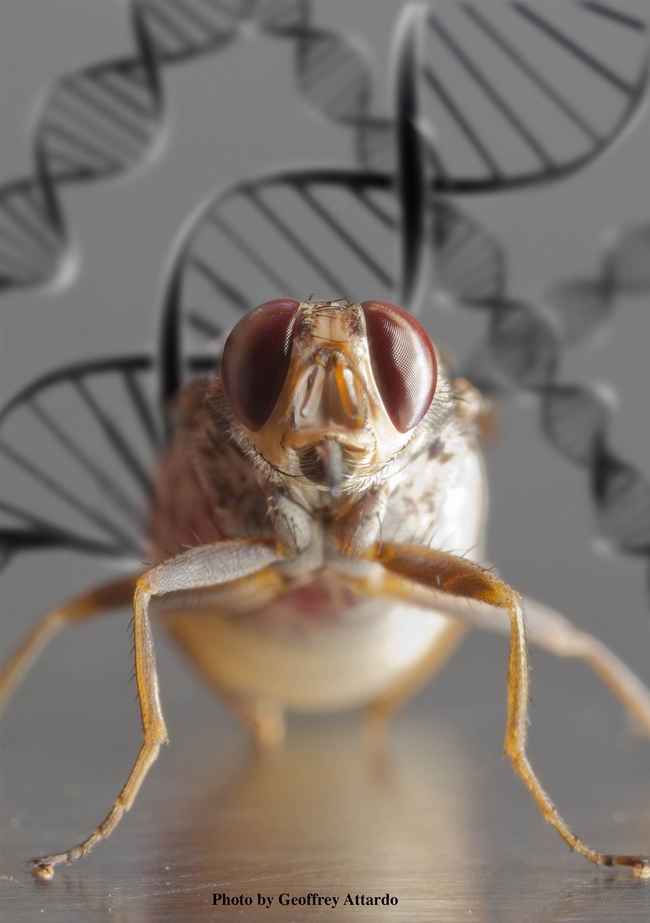
- Author: Kathy Keatley Garvey

The blood-sucking insect, which transmits the parasite that causes human and animal trypanosomiasis, has wreaked havoc in African countries.
It's distinguished from other Diptera by unique adaptations, "including lactation and the birthing of live young," says medical entomologist-geneticist Geoffrey Attardo, assistant professor, UC Davis Department of Entomology and Nematology.
Mark your calendar.
The UC Davis Department of Animal Science is hosting his seminar, “Tsetse Fly Reproduction: Exploration of the Unique Reproductive Adaptations of a Neglected Disease Vector” at 12:10 p.m., Monday, Oct. 7 in the Weir Room, 2154 Meyer Hall.
"Tsetse flies function as the sole vectors of human and animal Trypanosomiasis in sub-Saharan Africa," Attardo says in his abstract. "In addition to their role as disease vectors, tsetse flies distinguish themselves from other flies in terms of their amazing physiological adaptations. Of these adaptations, the reproductive biology/physiology of these flies stands out as one of the most dramatic."
"Female tsetse flies carry their young in an adapted uterus for the entirety of their immature development and provide their complete nutritional requirements via the synthesis and secretion of a milk like substance. Tsetse milk is derived of roughly 50 percent lipids and 50 percent proteins. Tsetse milk proteins are coded for by repurposed genes and by genes specific to tsetse flies. These genes are regulated in tight correlation with the female's pregnancy cycle. In addition, tsetse flies have established an obligate relationship with the bacterial symbiont Wigglesworthia glossinidius. This symbiont is required for lactation and larval development. Metabolic analysis of tsetse flies lacking this symbiont reveals a tightly integrated relationship between these organisms. This relationship is required for the metabolism of blood, production of essential micronutrients and synthesis/secretion of lipids essential for milk production.”
Attardo led landmark research published Sept. 2 in the journal Genome Biology that provides new insight into the genomics of the tsetse fly. The researchers compared and analyzed the genomes of six species of tsetse flies. Their research could lead to better insights into disease prevention and control.
“It was a behemoth project, spanning six to seven years,” said Attardo. “This project represents the combined efforts of a consortium of 56 researchers throughout the United States, Europe, Africa and China.” (See news story.)
In 1995, the World Health Organization (WHO) estimated that 60 million people were at risk of sleeping sickness, with an estimated 300,000 new cases per year in Africa, and fewer than 30,000 cases diagnosed and treated. Due to increased control, only 3796 cases were reported in 2014, with less than 15,000 estimated cases, according to WHO statistics.
WHO says that the parasitic disease “mostly affects poor populations living in remote rural areas of Africa. Untreated, it is usually fatal. Travelers also risk becoming infected if they venture through regions where the insect is common. Generally, the disease is not found in urban areas, although cases have been reported in suburban areas of big cities in some disease endemic countries.”
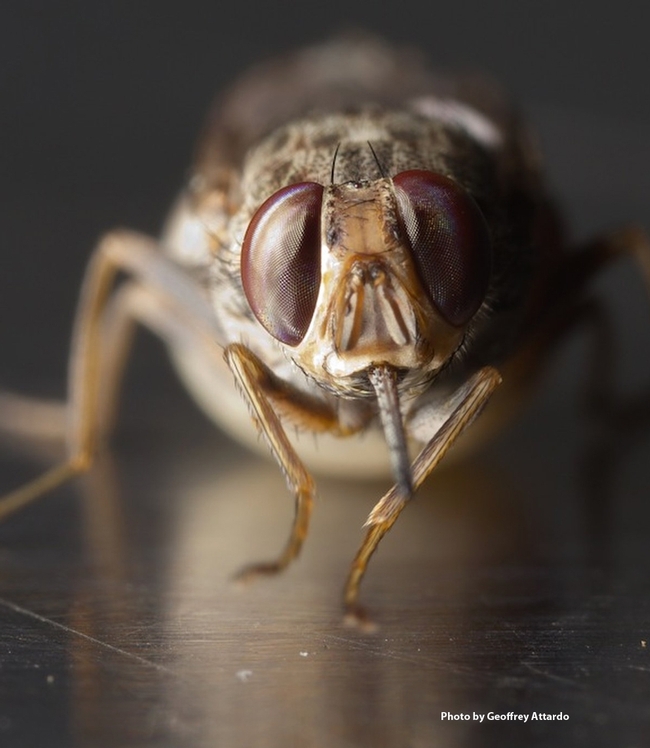
- Author: Kathy Keatley Garvey
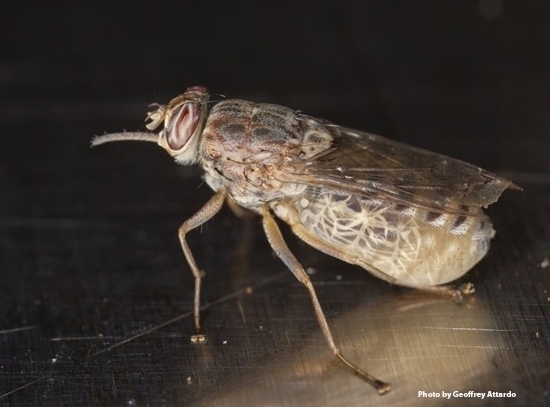
Yes? Then you'll want to attend the Science Café presentation on Wednesday, June 7, when medical entomologist and tsetse expert Geoffrey Attardo of the UC Davis Department of Entomology and Nematology will discuss “Got Milk? The Evolution and Biology of the Lactation in the Tsetse Fly.”
The event, set for 5:30 p.m., in the G Street Wunderbar, 228 G St., Davis, Calif., is free and open to the public. Jared Shaw of the UC Davis College of Letters and Science will host the presentation.
“It is actually going to be a very basic talk aimed at lay audiences and kids,” Attardo says. “I'll be talking about my background, how I became an entomologist and how I ended up working on tsetse flies. Then I am going to discuss the life history of tsetse flies, where they can be found, why they are of medical importance and how their reproductive biology differs so dramatically from other flies that people are familiar with. My plan is to go over their reproductive cycle, how they develop intrauterine larvae, the reproductive adaptations that allow them to perform this feat and then go over what we know about tsetse milk secretions and how they compare to mammalian milk in terms of nutritional content.”
“The aim is for it to be very informal, with very little scientific jargon and to be discussion-oriented so that there is lots of questions and answers. I am also bringing some items from the lab that can be passed around the audience for show and tell (homemade tsetse cages, the blood feeding system we use to feed the flies and some tsetse flies preserved in alcohol).
Attardo focuses his research on numerous aspects of the physiology of tsetse fly reproduction, with the goal to identify and understand key aspects of its reproductive biology. He joined the UC Davis Department of Entomology and Nematology in 2017 from the Yale University School of Public Health, New Haven, Conn., where he researched tsetse flies in the lab of Serap Aksoy.
Attardo considers the tsetse fly "one of the champions of the insect world."
"In addition to being vectors of a deadly disease, Trypanosomiasis, these flies have undergone amazing alterations to their physiology relative to other insects," he says. "Some examples of this are their ability feed exclusively on blood, their obligate relationship with a bacterial symbiont, the fact that they lactate and that they give birth to fully developed larval offspring."
If you'd like scientific information on tsetse fly lactation, see Adenotrophic Viviparity in Tsetse Flies: Potential for Population Control and as an Insect Model for Lactation, co-authored by Attardo and published in January 2015 in the Annual Review of Entomology.
The UC Davis scientist was featured in a New York Times' article on tsetse flies on Feb. 12. Pulitzer-Prize winning science writer Natalie Angier penned the article, "Everywhere in the Animal Kingdom, Followers of the Milky Way" (subhead: "As scientists learn more about milk's evolution and compositional variations, they are redefining what used to be a signature characteristic of mammals.")
"Most female flies take a low-rent approach to parenthood, depositing scores of seed-sized eggs in the trash or on pet scat to hatch, leaving the larvae to fend for themselves," Angier wrote. "Not so the female tsetse fly. She gestates her young internally, one at a time, and gives birth to them live. When each extravagantly pampered offspring pulls free of her uterus after nine days, fly mother and child are pretty much the same size."
Then she quoted Attardo: “It's the equivalent of giving birth to an 18-year-old."
Attardo is also a talented macro photographer. He won the 2010 Fogarty Grantee Photo Contest with an image of a tsetse fly. The Yale School of Public Health magazine featured his images on “An Eye for the Tsetse Fly.” The Los Angeles Times published his remarkable video (in 2014) of a tsetse fly giving birth. Also, see his portraits of the tsetse fly on Live Science, published in 2014.
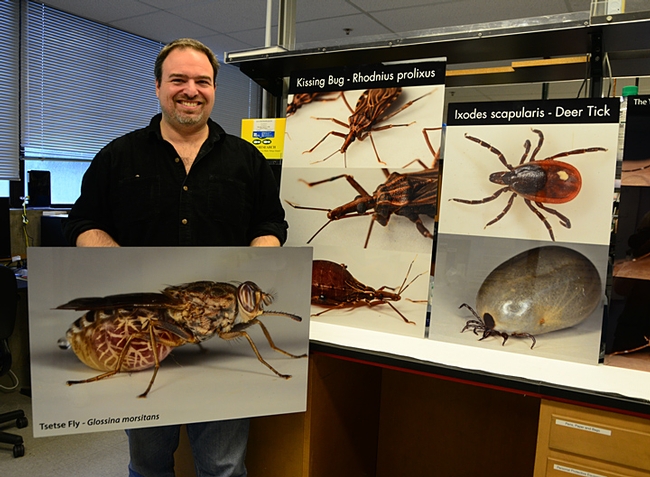
- Author: Kathy Keatley Garvey
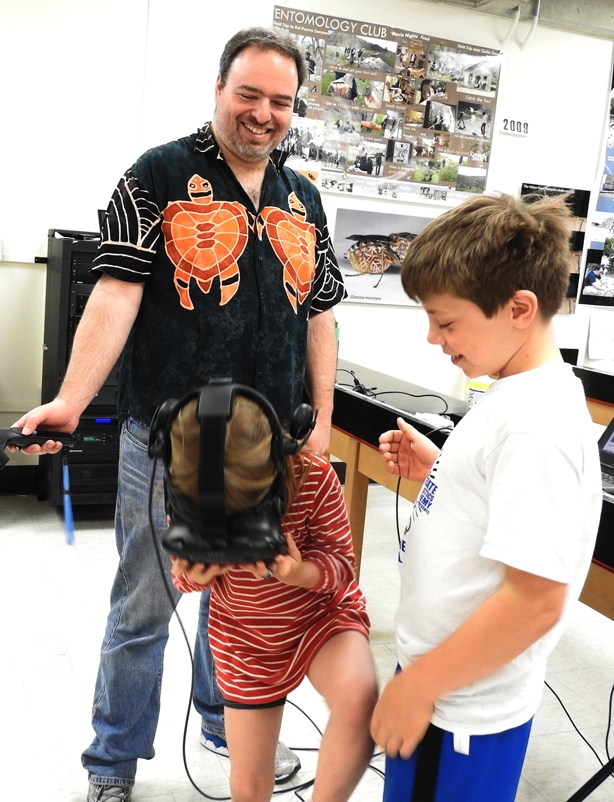
And that it did Saturday at the 105th annual UC Davis Picnic Day--especially at the second annual "Virtual Reality Bugs" display at Briggs Hall, the administrative home of the UC Davis Department of Entomology and Nematology.
Medical entomologist/geneticist Geoffrey Attardo, an assistant professor in the department who researches tsetse flies, mosquitoes and other vectors, demonstrated his program all day to hundreds of participants.
They marveled at the 40-foot-tall, three-dimensional insects and spiders. They chose what they wanted to see towering over them: a black widow spider, ant, beetle, grasshopper, damsel fly, cicada, cockroach, and a tsetse fly.
What's a picnic without bugs?
Sebastian Ehrlich, 9, and his sister Kamila, 6, of Davis, accompanied by parents Ethan and Carolina Ehrlich, were among the first in line.
They loved Virtual Reality Bugs.
"My kids' favorite part of Picnic Day was the VR," their mother said. "Oh how I'd love it if one of them at least became a scientist."
Paul McClelland of Sunnyvale, a UC Davis graduate in zoology (1983), and his wife, Marjirjam, also delighted in seeing the gigantic bugs--and the computer and display techniques that made the display possible.
"They didn't have that when I was going to school," McClelland quipped.
Attardo describes VR as a "computer-generated simulation used to simulate real or imagined environments."
"It immerses the user by stimulating visual, auditory and touch-based senses," he says. He presented a program on "Using Virtual Reality to Engage and Instruct: a A Novel Tool for Outreach and Extension," at the 2018 Entomological Society of America (ESA) meeting in Vancouver, B.C.
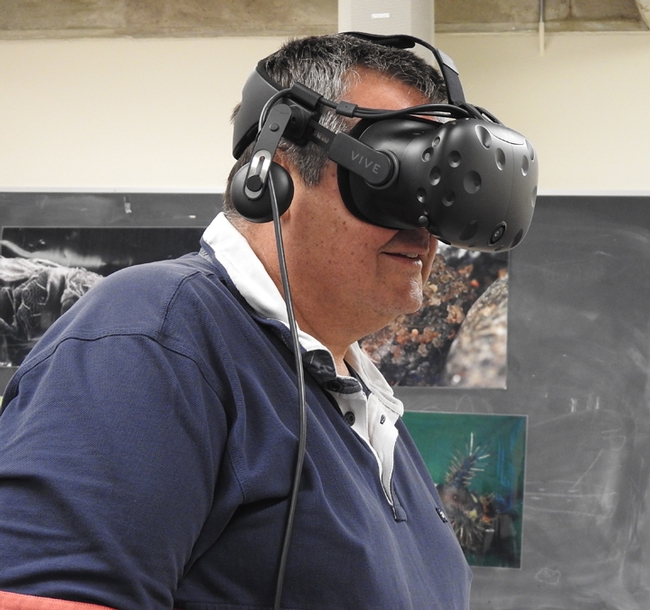
Attardo's sketchfab.com account is at https://sketchfab.com/models/263750e5a9c54c56a77d63ac06f2f317. His first model was a tsetse fly.
Attardo says that "VR has great potential as a new way to present entomological content including aspects of morphology, physiology, behavior and other aspects of insect biology. This demonstration allows users of all ages to view static and animated 3D models of insects and arthropods in virtual reality."
"This is accomplished by placing users in virtual spaces with content of interest and allows for natural interactions where users can physically move within the space and use their hands to directly manipulate/experience content. VR also reduces the impact of external sensory distractions by completely immersing the user in the experience. These interactions are particularly compelling when content that is only observable through a microscope (or not at all) can be made large allowing the user to experience these things at scale. This has great potential for entomological education and outreach as students can experience animated models of insects and arthropods at impossible scales."
In his presentation to ESA, Attardo commented: "This isn't your parents' virtual reality! Early computers and monitors could not produce the frame rate/resolution required. Early attempts at VR were heavy, awkward and motion-sickness inducing. Increased processing power, smaller computers and high resolution screens have solved these issues."
As McClelland said, "They didn't have that when I was going to school."
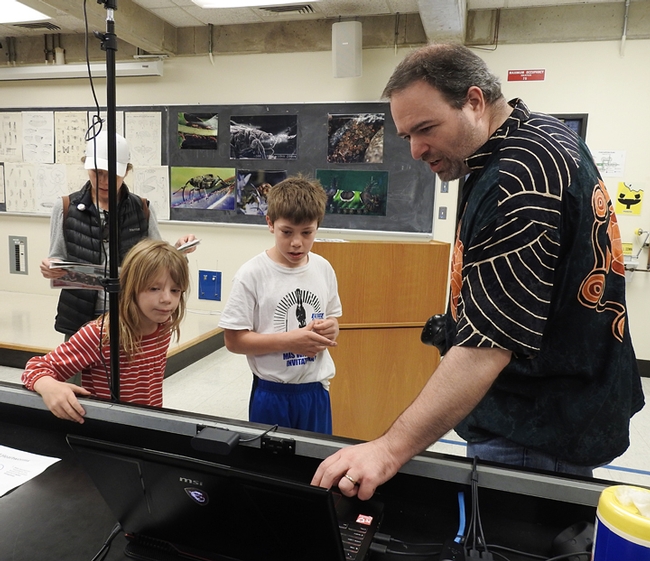
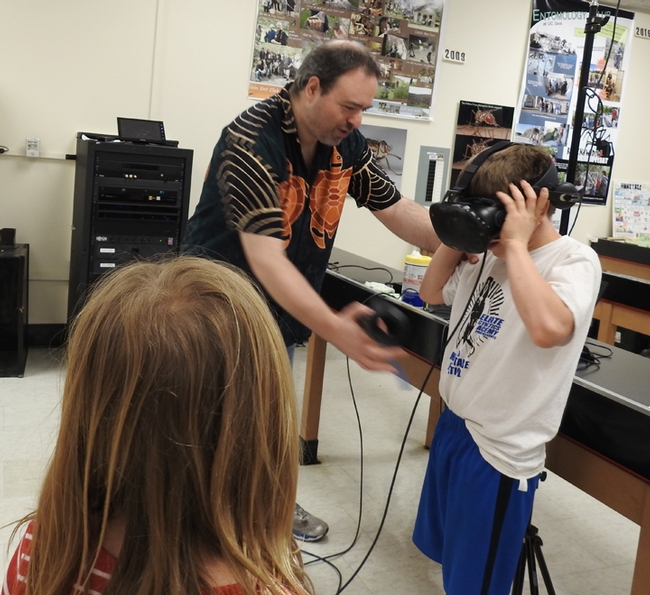
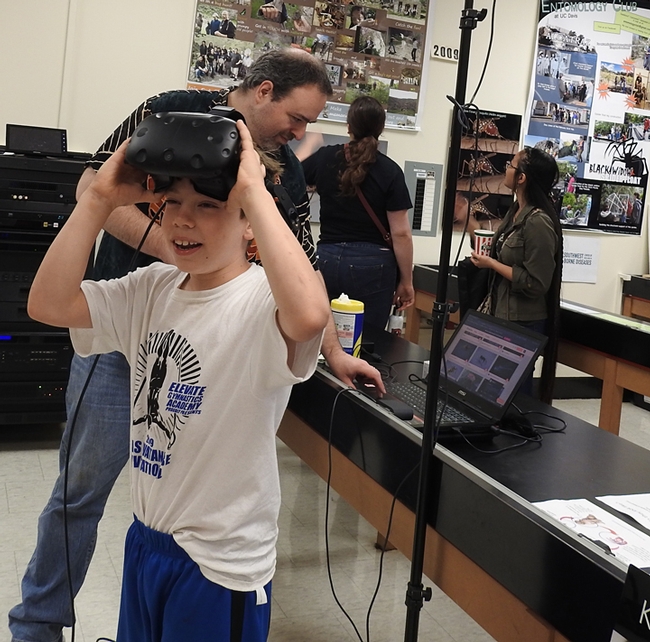
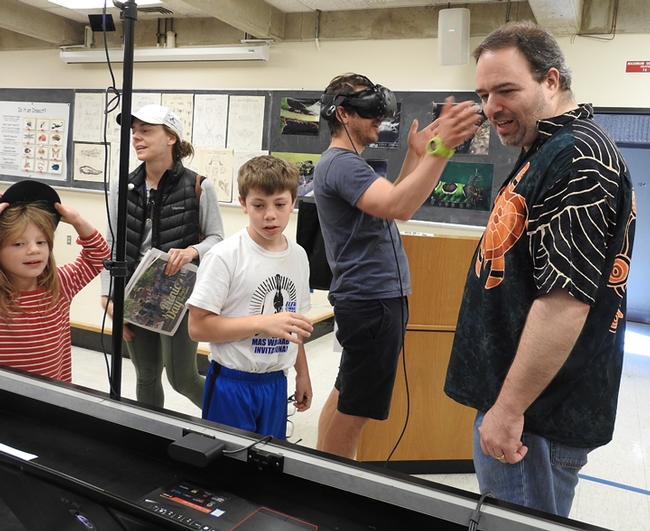
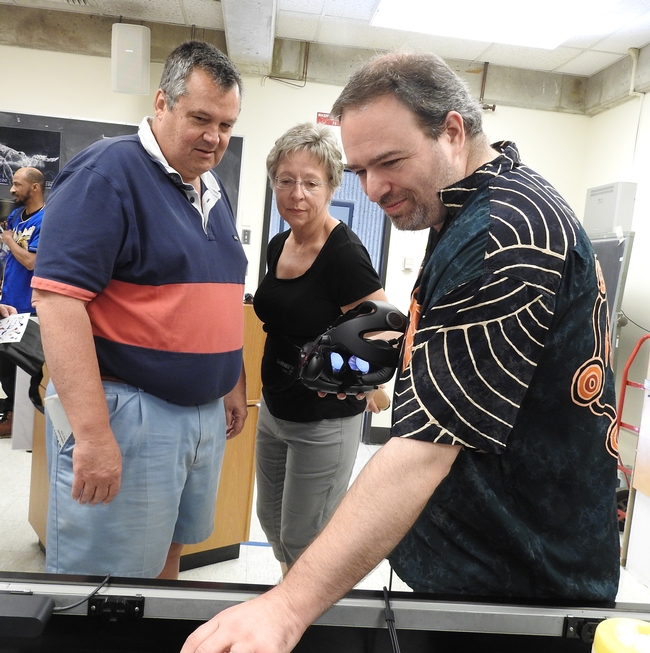
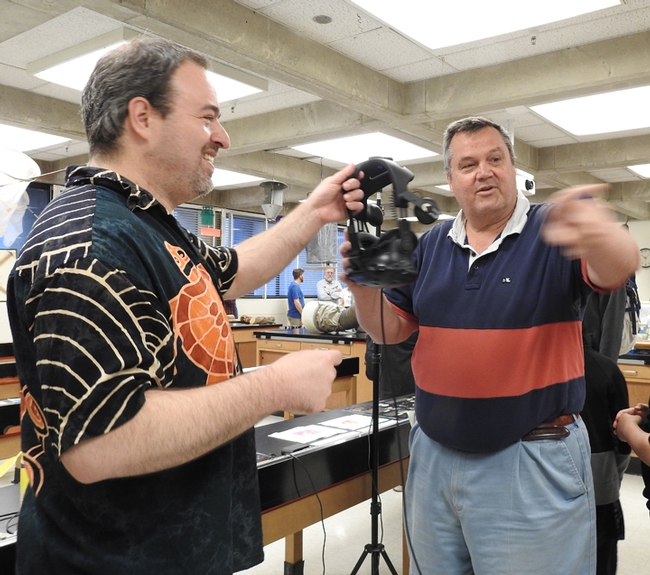
- Author: Kathy Keatley Garvey
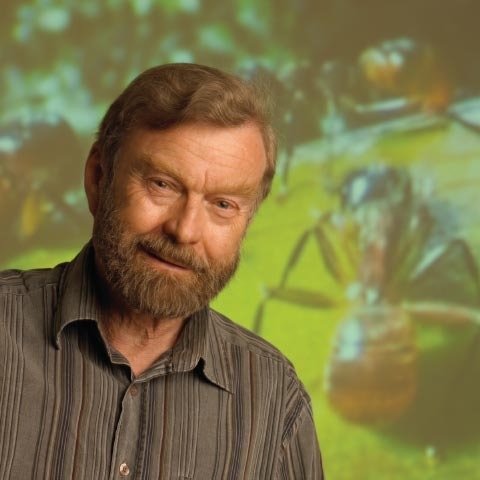
Bert Hölldobler, an evolutionary biologist based at Arizona State University who researches the evolution and social organization in ants, will discuss "The Superorganism: Communication, Cooperation and Conflict in Ant Societies" at the UC Davis Department of Entomology and Nematology's seminar on Wednesday, April 17 at 4:10 p.m. in Room 122 of Briggs Hall.
Hölldobler says that colonies that are "true superorganisms, show great cooperation among their nest mates and exhibit fierce aggression against neighboring conspecific colonies and display complex territorial strategies."
His experimental and theoretical contributions cover sociobiology, behavioral ecology, and chemical ecology. "His primary study subjects are social insects and in particular ants," according to Wikipedia. "His work has provided valuable insights into mating strategies, regulation of reproduction, the evolution of social parasitism, chemical communications, and the concept of 'superorganisms.'"
Hölldobler and co-author E. O. Wilson won the Pulitzer Prize for non-fiction writing in 1990 for their book, The Ants. They also co-authored The Superorganism: The Beauty, Elegance, and Strangeness of Insect Societies and Journey to the Ants: A Journey of Scientific Exploration. Hölldobler is also the author of The Leafcutter Ants.
Born in Bavaria, Germany on June 25, 1936, Bert studied biology and chemistry at the University of Würzburg. He wrote his doctoral thesis on the social behavior of the male carpenter ant and their role in the organization of carpenter ant societies.
Hölldobler began his academic career at the University of Frankfurt in 1971 as a professor of zoology. From 1973 to 1990 he served as professor of biology and the Alexander Agassiz professor of zoology at Harvard University, Cambridge, Mass. Hölldobler returned to Germany in 1989 to accept the chair of behavioral physiology and sociobiology at the Theodor-Boveri-Institute of the University of Würzburg.
From 2002 to 2008, Hölldobler was an Andrew D. White Professor-at-Large at Cornell University, Ithaca, N.Y. Since his retirement in 2004, he has worked at Arizona State University (ASU) as a professor and research scientist. A Regents' and Foundation professor, he is one of the founders of the Social Insect Research Group (SIRG) and of the Center for Social Dynamics and Complexity.
The seminars are coordinated by medical entomologist/assistant professor Geoffrey Attardo and take place at 4:10 p.m. every Wednesday through June 5 in 122 Briggs Hall. (See list of seminars)
